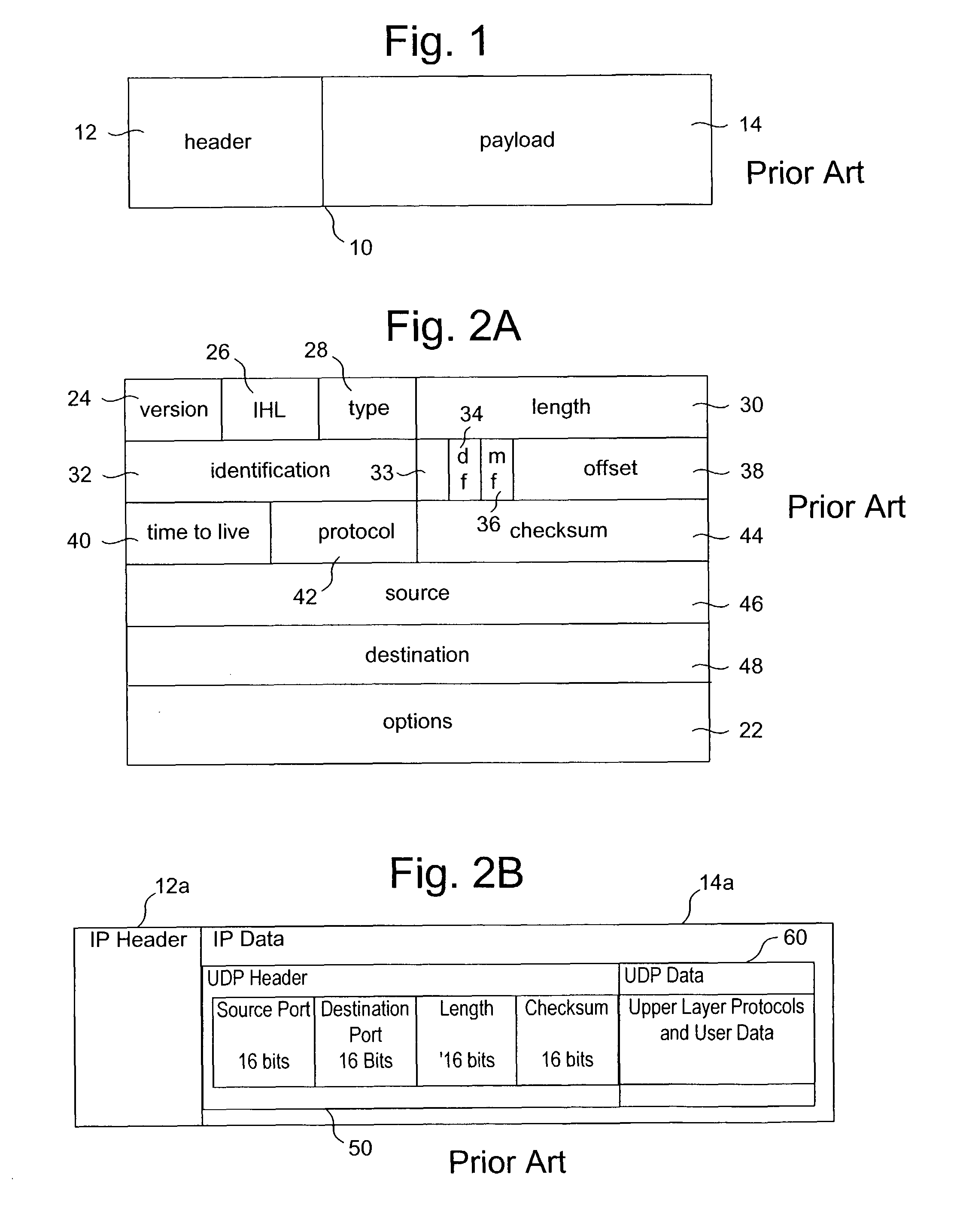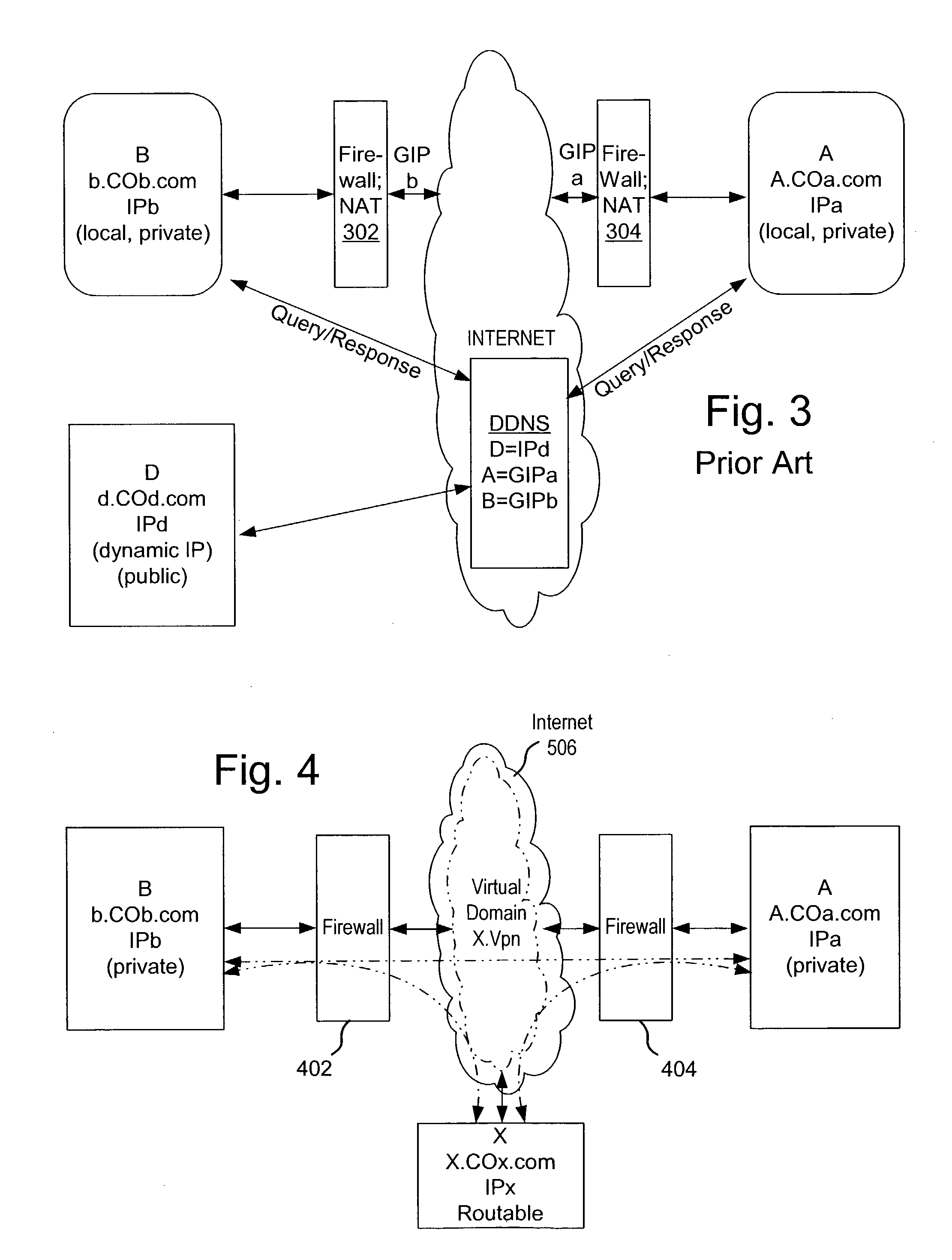Secure virtual community network system
a virtual community and network system technology, applied in the field of network services system, can solve the problems of many nat implementations not working, running out of addresses, and the internet is rapidly becoming a victim of its own popularity
- Summary
- Abstract
- Description
- Claims
- Application Information
AI Technical Summary
Benefits of technology
Problems solved by technology
Method used
Image
Examples
Embodiment Construction
[0077]One embodiment of the present invention provides for a secure Virtual Community Network or “VCN.” In essence, a VCN is a private dynamic network which acts as a private LAN for computing devices coupled to public networks or private networks. This enables computing devices anywhere in the world to join into private enterprise intranets and communicate with each other. Thus, the invention provides a separate private virtual address realm, seen to each user as a private network while seamlessly crossing public and private network boundaries.
[0078]A basic overview of the system is shown in FIG. 4. FIG. 4 shows a computer or device B (host name—b.COb.com) in a first private domain and computer or device A (host name—a.COa.com) in a second private domain, both of which are coupled to the Internet by firewall devices 402, 404. The firewall devices are configured to implement Network Address Translation (NAT). A and B have dynamic or static private IP addresses. Computer or device X ...
PUM
 Login to View More
Login to View More Abstract
Description
Claims
Application Information
 Login to View More
Login to View More - R&D
- Intellectual Property
- Life Sciences
- Materials
- Tech Scout
- Unparalleled Data Quality
- Higher Quality Content
- 60% Fewer Hallucinations
Browse by: Latest US Patents, China's latest patents, Technical Efficacy Thesaurus, Application Domain, Technology Topic, Popular Technical Reports.
© 2025 PatSnap. All rights reserved.Legal|Privacy policy|Modern Slavery Act Transparency Statement|Sitemap|About US| Contact US: help@patsnap.com



